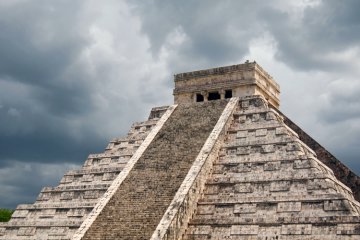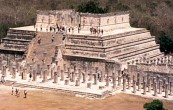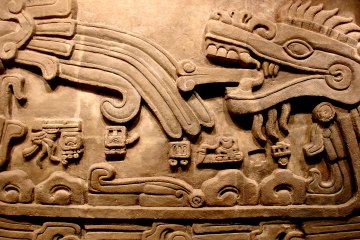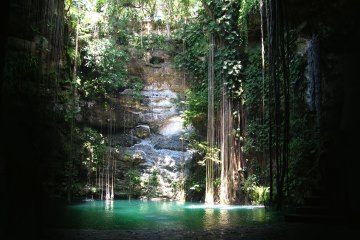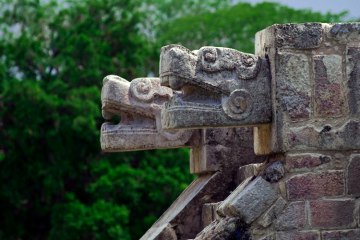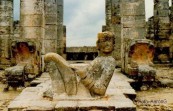The large restored and partially reconstructed structures, like the famous Ball Court, make Chichén Itzá one of the most impressive and most visited ruins in the Yucatan. While there has been a great deal of reconstruction there already, as you walk around the site, you are sure to see small hills that are other structures waiting to be rebuilt.
The architecture of Chichén Itzá is split between the original Mayan city that was built beginning in the 8th Century and the later arriving Toltecs. According to historians, the Toltecs from Central Mexico conquered the area in the later part of the 10th Century and began building in their own style. If you visit, the difference in the building styles will be evident.
The most dominating structure in Chichén Itzá is the Pyramid of Kukulkán, which is built in the Toltec style. One of the fascinating features of the structure is that it’s actually a remarkably accurate form of calendar. Each side of the pyramid has 91 steps, which multiplied by the 4 sides equals a total of 364. Add one to that to represent an additional step for the top platform gives a total of 365. The Mayan Calendar was composed of 18 months of 20 days plus one month of five days, which also equals 365. We’ve never been there at the right time to see the phenomenon but on the spring and autumnal equinox, the shadow cast by the steps of the pyramid creates the image of a serpent moving up and down the pyramid.
To the right the photo of the pyramid is the Temple of the Warriors, which is also known as the Group of the Thousand Columns. Many of the columns are carved with the images of warriors. Ask your guide to show you the image of what is thought to be a Western fighter. Be sure to look for the famous statue of Chac Mool, a reclining god holding a bowl near the front of this temple.
One of the more intriguing of the Mayan built structures is known as El Caracol or The Observatory. The word “caracol” is Spanish for conch and the building earns it’s name by the winding stairways in it’s interior. In fact, the building is a planetarium with windows set to view specific celestial bodies. It is amazing to realize that the Maya had advanced so far in the science of astronomy so long ago.
There are quite a few other structures and points of interest in Chichén Itzá including the Temple of the Jaguars and Tzompantli. The base of Tzompantli, which is also known as the Platform of the Skulls is decorated with hundreds of carved skulls, each different from the next. It is thought that this is one of the locations where the Toltecs made human sacrifice.
In addition, you will probably want to walk down the pathway, which was once part of the sacbeob, the Mayan white stone road system as it leads to the Sacred Cenote.
Chichén Itzá is located roughly half way between Cancún and Mérida. A drive there will take from 2-3 hours from either direction. Tickets for an organized day trip can be bought from any travel agent or hotel travel desk in either city. It is also possible to make an organized trip there via commuter airplane from Cozumel.
The easiest and quickest access is from the beautiful colonial city of Valladolid, where you can take an early bus and arrive as the park opens; well ahead of the tour buses. As an alternative, you can take a bus or drive yourself from Cancún, Mérida, Tulum or Playa del Carmen. Regardless of how you go there, it would be smart to plan your arrival as early as possible to avoid the crowds and the afternoon heat.
On our last visit, it cost $75 Pesos for admission. English speaking guides are available. At 8:00pm each night, there is a light and sound show that will cost you an additional $35 pesos or $60 pesos with headphones that will allow you to hear the story in English.

